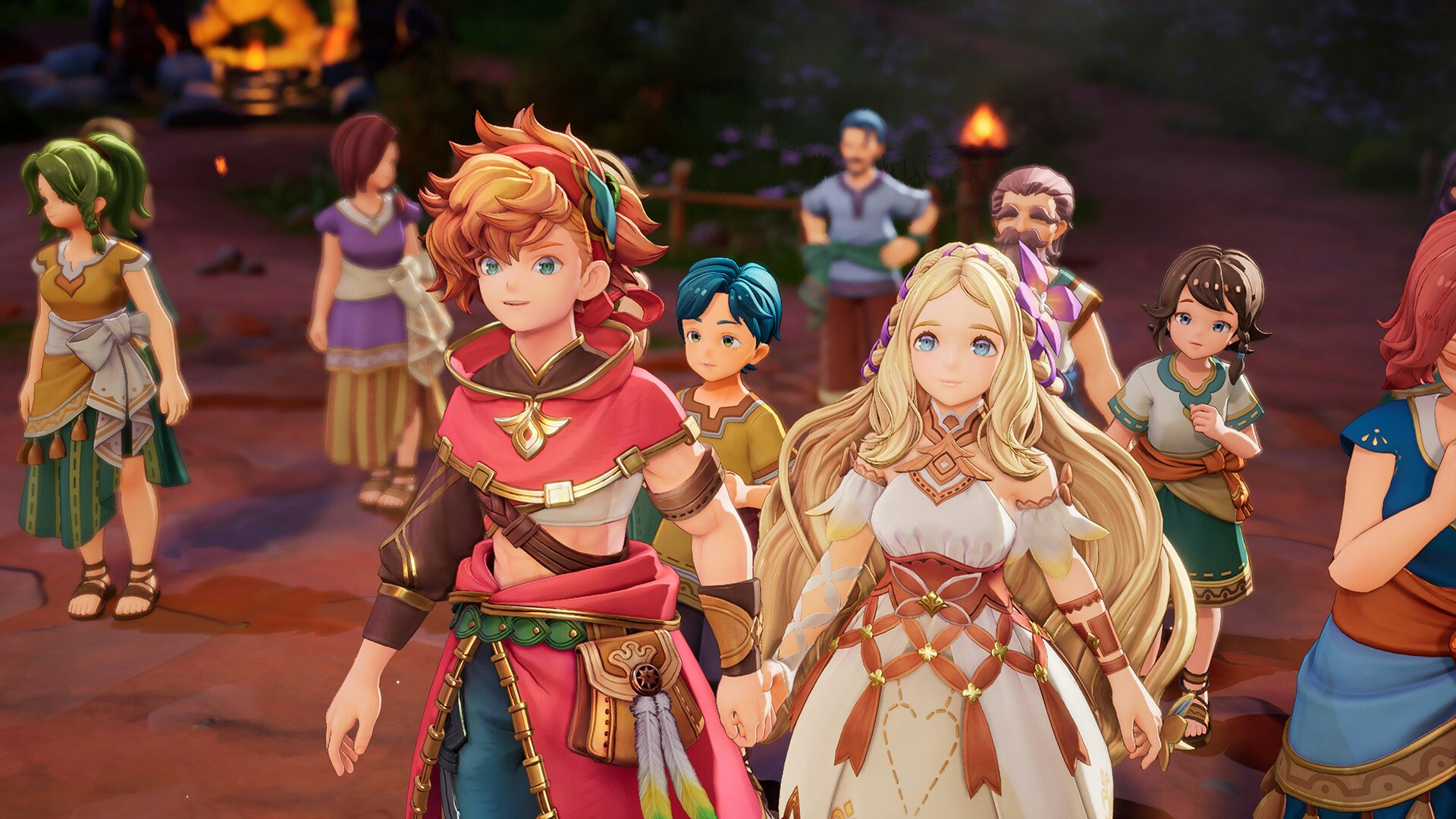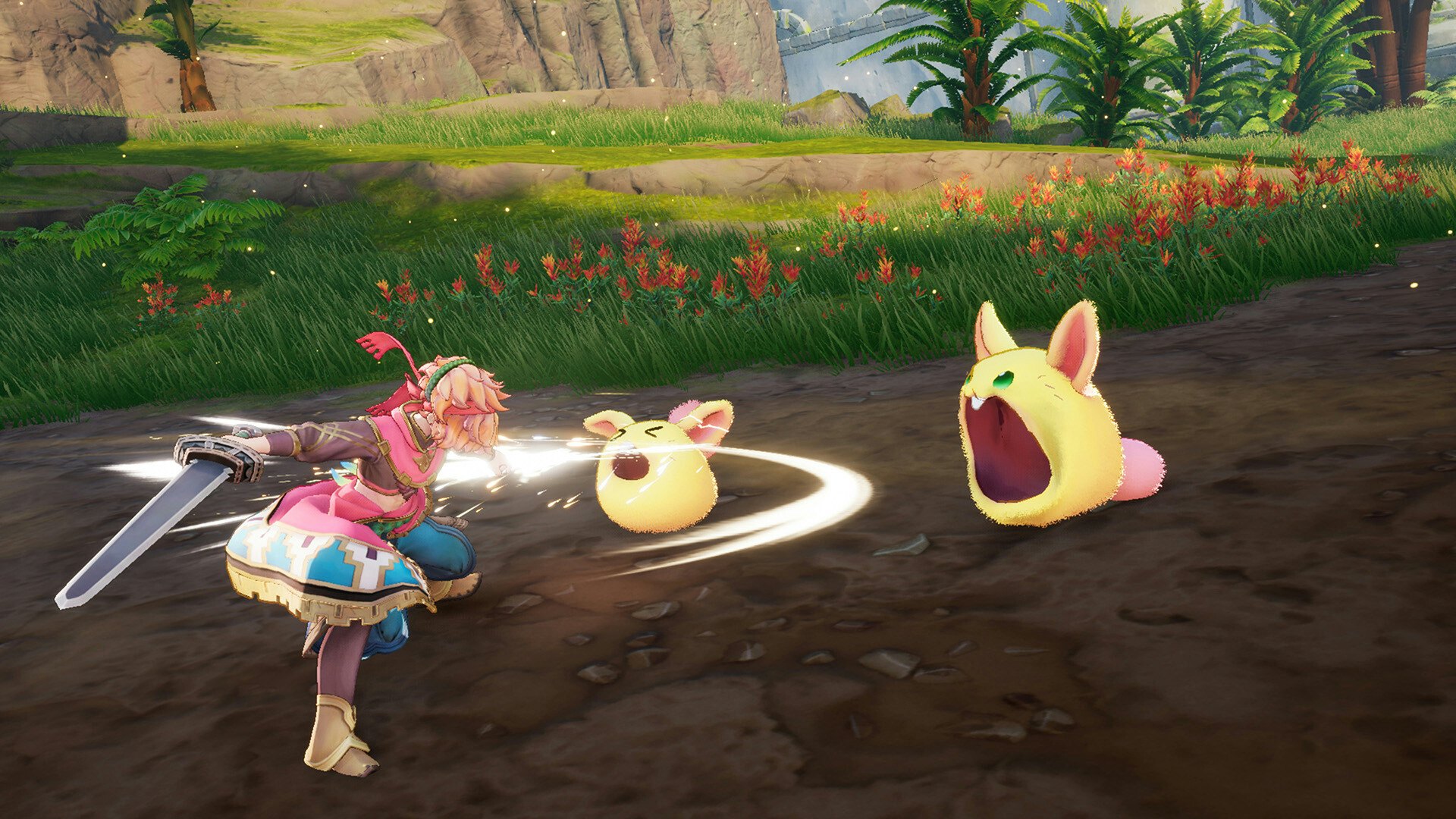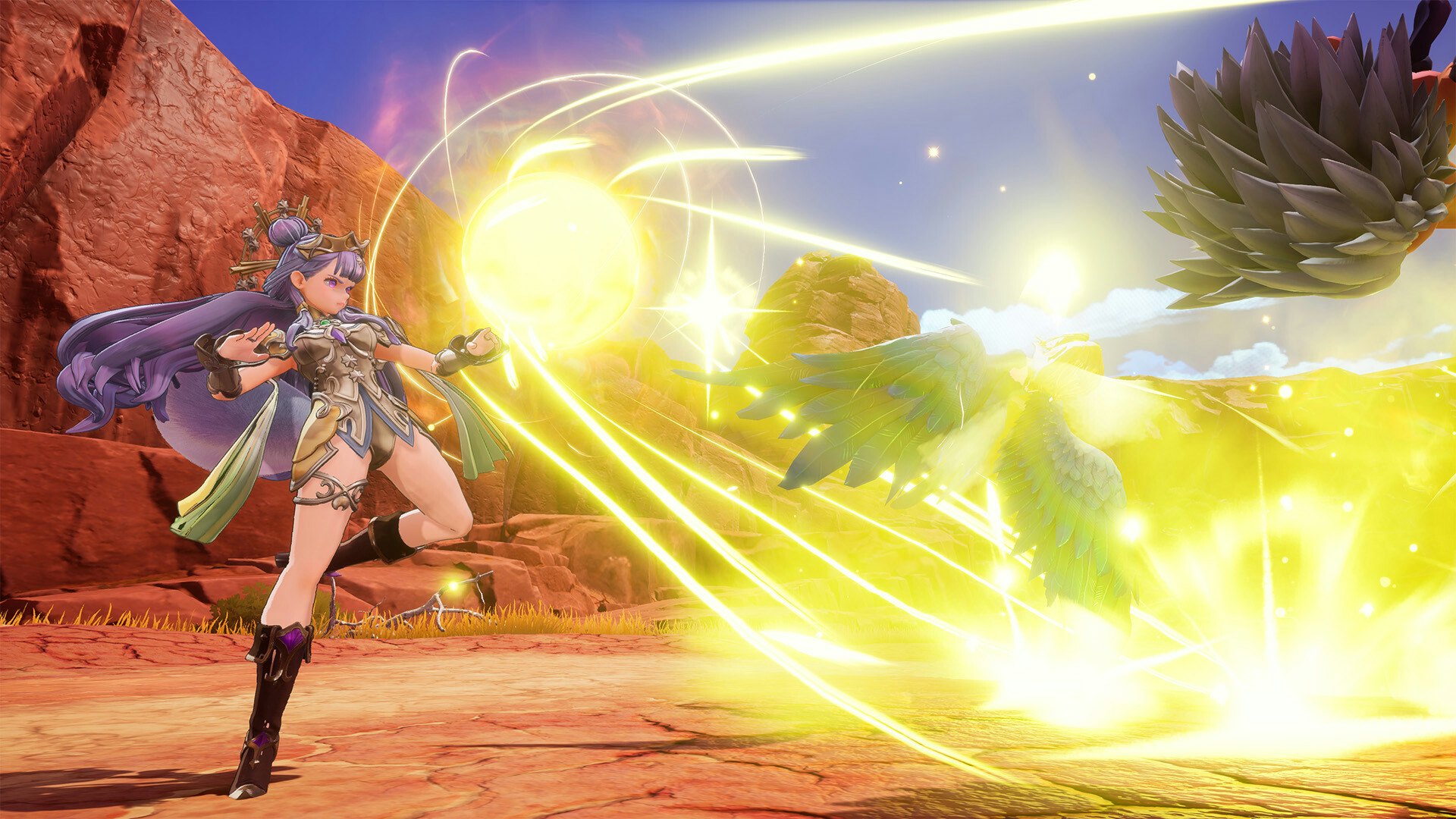
The Mana series has always been something of a second-string role-playing game from Square Enix. Despite Secret of Mana being one of the best RPGs on the SNES, subsequent games have been a mixed bag, and for more than a decade, the series has consisted of remakes, ports, and mobile spinoffs. Now, the series is back with Visions of Mana, its first original title in nearly 20 years. Early looks at the game seemed to offer what Mana fans have been waiting for — a game that honors the past while bringing the series into the future — but after all that time, it still seems firmly stuck in the past. There’s a fine line between invoking nostalgia and feeling dated, and everything from its dull story and lifeless world to its uninspired combat puts the latest entry in the Mana series firmly on the wrong side of that line.
Visions of Mana starts with an intriguing premise. You play as Val, a Soul Guard who’s tasked with leading your party to the Mana Tree for a sacred ritual. The point of their pilgrimage: to sacrifice a group of individuals called Alms to the goddess who dwells in the tree and stave off the world’s destruction for another few years. As grim as their duty is, Val and Hinna — his girlfriend and also the Alm of fire — set off with all the eagerness of a couple leaving for a long-overdue vacation, immediately deflating any sense of tension.
A less-than-epic tale

Their sacrifice is a matter of routine in this world, and being named Alm is a coveted honor. But even before taking control of Val, we’re shown another side of the story. Years ago, a Soul Guard and an Alm fled their duty, hoping to escape and live out the rest of their lives together. The Alm is punished by being turned to stone as the Soul Guard sets out to find a way to stop the sacrifices forever.
The Mana series has never been a narrative powerhouse, but Visions’ story still feels like a letdown. Over and over, it flirts with the idea of interrogating its world without ever delivering on it. We’re told that maintaining order didn’t always mean feeding teenagers to a silent goddess, but those who aren’t thrilled with spilling blood to perpetuate the cycle are presented as suspicious or outright villainous. Val, Hinna, and others start to doubt their mission and discuss finding another way to save the world, only to reaffirm their excitement at being made into sacrificial lambs in the next scene. After hours of teasing the idea that Val and company could go renegade and confront the goddess directly, Visions wraps up its story in the least satisfying way possible, with the third-act introduction of a disappointingly trite villain seemingly plucked from a bucket marked “Overused JRPG Characters.”
Its weak story might not feel so bad if you were spending your time with an interesting group of characters, but Val and the gang have about as much personality as cardboard cutouts. Outside of a few broad traits (Careena is a feisty young girl with an inexplicable Southern accent! How charming!), they might as well not speak at all, and the closest thing to character development any of them gets is a tidy, unearned conclusion to whatever personal drama they were facing when they joined the crew.
Monster masher

The heart of Visions lies in its combat, not its story, and here it fares slightly better — in the sense that there are a few satisfying fights scattered about the game while not a single moment of its story is handled well. Combat in Visions is essentially an improved version of what was in 2020’s Trials of Mana. Your active character has light and heavy attacks that can be chained into combos, plus spells that can be selected from a menu or assigned to shortcut buttons. You can freeze time to tell party members to use spells, or switch to controlling them with a button press. Melee combat feels substantially more satisfying this time around, with more sophisticated combos and an emphasis on stunning enemies or juggling them in the air. Still, it’s pretty basic, and party members feel far too similar, despite them all using different weapons and fighting styles.
Whichever character you’re controlling, you can largely button-mash your way through combat even on hard difficulty — that is, until you run into an enemy that does so much damage it can wipe your party before you know what hit you, something that happens regularly around the game’s midpoint. The highlight of combat is clearly the boss fights, which feature more complex mechanics, including weak points and telegraphed attacks to dodge. Toward the end of the game, your NPC companions have a lot of trouble keeping up and need constant babysitting, but the bosses are still the only combat encounters that really ask you to make full use of your party’s skills and by far the most enjoyable moments in the game.
Braving the elements

The mechanical crown jewel of Visions of Mana is the Elemental Vessel system. At certain points in the story, the party comes into possession of one of these trinkets, each of which holds the power of one of the world’s eight elements: Water, Fire, Wind, Earth, Wood, Moon, Light, and Dark. Anyone holding a vessel gets access to a powerful elemental skill, which might slow time, pull enemies toward them, or heal the party. Equipping a vessel also changes its bearer’s class, and those classes are different for each character. Hand the Vessel of Wind to the mage Palamena and she becomes a ranged damage-dealing Rune Seer, while giving it to the fan-wielding Careena turns her into a tanky, debuffing Dancer.
It’s an intriguing system on its face, but ends up adding more complexity than fun. As characters level up, they can unlock more skills for a given class. Spells earned this way can be used even if they switch classes, but a handful of skills including passive abilities are tied to the vessel that grants them. In theory, this allows players to create custom classes by mixing and matching skills, but few of these have unique abilities powerful or interesting enough to make it worth crafting a build around them. I had no problem purchasing every skill I wanted by the game’s finale, and unique class skills offer so little that I ended up just giving one character whichever vessel would exploit nearby enemies’ elemental weakness and using the same few vessels with useful elemental skills for most of my playthrough.
On top of Elemental Vessels, characters can equip Ability Seeds to gain new spells and passives. At first, each character can only equip two Ability Seeds, but items scattered around the world in chests will let a specific character add two more. Similarly, only a few skills for each Elemental Vessel are available to purchase from the start, and more can be unlocked by finding yet another item for each character. While there’s some fun in slowly acquiring power this way, all that randomness makes upgrading your party feel more like a matter of luck than strategy.
A boring, beautiful world

That’s especially true because so many of Visions’ environments are massive open spaces with little in the way of interesting level design to steer you toward treasure or just make traversal more fun. Chests are handily marked on your minimap, but tracking them all down just in case one is worth it is as tedious as button-mashing your way through dozens of enemy groups to get there. Cities and towns suffer from the same problem, requiring you to jog across huge expanses between their amenities.
The one area where Visions unequivocally shines is in its visuals. It’s hard to overstate just how good this game looks as you’re galloping across the mostly empty expanse of its world on the back of your mount, a giant, adorable dog-like critter called a pikul. Visions’ art style is cartoony and expressive, its environments and combat effects bursting with color. While its world design doesn’t make for interesting exploration, it does highlight the game’s beauty, often framing far-off vistas for maximum visual appeal. While I’m not overly fond of any of the character designs, each class change for your party comes with an outfit to match — complete with a short magical girl transformation scene — and these costumes are uniformly stunning.
It’s a shame nothing else in Visions lives up to its gorgeous presentation. While it’s a joy to look at, I found it dull to trudge through, with too many undercooked systems bogging down what’s otherwise extremely simplistic gameplay. Even that wouldn’t be a dealbreaker if its story and characters were good enough, but alas, no luck there either. As someone with a soft spot in my heart for Secret of Mana, I keep hoping that the series will see another truly great game again someday. Unfortunately, Visions of Mana isn’t it.
5/10
Visions of Mana is available on PlayStation, Xbox, and PC on August 29. Inverse reviewed the game on PS5.
INVERSE VIDEO GAME REVIEW ETHOS: Every Inverse video game review answers two questions: Is this game worth your time? Are you getting what you pay for? We have no tolerance for endless fetch quests, clunky mechanics, or bugs that dilute the experience. We care deeply about a game’s design, world-building, character arcs, and storytelling come together. Inverse will never punch down, but we aren’t afraid to punch up. We love magic and science-fiction in equal measure, and as much as we love experiencing rich stories and worlds through games, we won’t ignore the real-world context in which those games are made.







